
views
What is the Mandela Effect?
The Mandela Effect refers to the phenomenon of a collective false memory. Have you and a friend ever sworn to remember a logo, quote, or image a certain way but then realize it’s not how you remember it? That’s the Mandela Effect! This Effect occurs when a large group of people recall something differently together. Most commonly, this occurs with franchise logos and pop culture references.
How does the Mandela Effect work?
The Mandela Effect occurs when you recall a false memory. Your memory is malleable, meaning it can be easily changed even without you knowing. Memories are stored in the brain with similar memories, and when paired with current and past perceptions, you may recall something that isn’t entirely accurate. This doesn’t mean you’re losing your memory! Your neurons are simply retrieving information from associations and perceptions.
Mandela Effect Examples
Berenstein Bears Many argue that this famous children’s book series was titled “Berenstein Bears” with three es. However, the correct title is “Berenstain Bears” with two Es.
Pikachu’s Tail Close your eyes and recall Pokémon’s famous mascot. Does he have black markings on his tail? Many fans believe he does, but the character does not have a black-tipped tail. Although, he does have black-tipped ears.
Curious George’s Tail Think about the popular children’s book character Curious George. Did he have a tail? Lots of people argue he did, even recalling pictures of it. However, Curious George has never had a tail—he’s a tailless monkey!
Fruit of the Loom’s Logo Many believe that the Fruit of the Looms logo once had a cornucopia behind its featured fruit. However, this is incorrect! The logo actually only showcases the fruit and the company’s name, no cornucopia.
Mr. Monopoly’s Monocle Do you picture Mr. Monopoly with a monocle? If you do, you’re not alone! Believe it or not, Mr. Monopoly has never had any form of eyewear.
Mickey Mouse’s Suspenders Some fans believe that Mickey Mouse wore suspenders, especially in Disney’s original cartoons of the famous mouse. However, Mickey has never worn suspenders.
Oscar Meyer Believe it or not, the famous hot dog brand is not “Oscar Meyer” but “Oscar Mayer.”
Shaggy’s Adam’s Apple Shaggy from Scooby Doo is recalled to have a big Adam’s apple. However, the character has never had one.
Shazam, Starring Sinbad Many believe that there was a movie called Shazaam in the 1990s that starred actor and comedian Sinbad. But this movie never existed.
Luke, I Am Your Father Star Wars fans can recite Darth Vader’s most famous line from Episode V: “Luke, I am your father.” However, this pivotal scene never featured this line. Instead, Vader says, “No, I am your father.”
C-3PO’s Leg The famous Star Wars droid C-3PO is recalled to have a silver right leg by many. However, the droid is actually all gold, no silver in sight.
Life is Like a Box of Chocolates Forrest Gump gave us plenty of life advice, but his most quoted line, “Life is like a box of chocolates,” was never said. What Tom Hanks’ character actually says is, “Life was like a box of chocolates.”
Mirror, Mirror on the Wall In Disney’s Snow White and the Seven Dwarfs, the Evil Queen is believed to say, “Mirror, mirror on the wall, who’s the fairest of them all.” But what she actually says is, “Magic mirror on the wall.”
I Don’t Think We’re in Kansas Anymore One of the most famous lines from The Wizard of Oz doesn’t actually exist! Dorothy is recalled to say, “Toto, I don’t think we’re in Kansas anymore.” But what she really says is, “Toto, I’ve a feeling we’re not in Kansas anymore.”
We’re Gonna Need a Bigger Boat One of the most popular lines quoted from 1975’s Jaws is, “We’re gonna need a bigger boat.” However, the actual line spoken by Roy Scheider’s character is, “You’re gonna need a bigger boat.”
Run, You Fools! Gandalf from Lord of the Rings is often quoted saying, “Run, you fools!” But what he really says is, “Fly, you fools!”
Beam Me Up, Scotty Star Trek fans swear William Shatner as Captain Kirk said, “Beam me up, Scotty.” But what was actually said is, “Scotty, beam us up.”
Let’s Play a Game The most commonly quoted line from Saw is “Let’s play a game.” However, Jigsaw never says this. What’s actually said is, “I want to play a game.”
Play It Again, Sam In the 1942 film Casablanca, Ingrid Bergman’s character is believed to have said, “Play it again, Sam.” However, this quote was never said! Although, Bergman’s character does say, “Play it once, Sam.”
Looney Toons Think about the credits of Bugs Bunny or Daffy Duck. Do you remember what the title card said? Many argue the title of the popular cartoon was "Looney Toons," but it’s actually "Looney Tunes."
Flinstones We hate to burst your bubble, but this cartoon from the 60s is spelled “Flintstones,” not “Flinstones,” with two Ts.
Snoopy’s Tail Close your eyes and think about Snoopy, the lovable dog from Charlie Brown. What color is his tail? Believe it or not, it’s white with a black spot, not fully black, as many believe.
Sandy Cheeks’ Backpack SpongeBob SquarePants fans swear the character Sandy Cheeks carried a backpack. But in actuality, she never wore anything on her back.
Fruit Loops Believe it or not, your favorite cereal may not be spelled like you remember. The proper spelling is "Froot Loops," not "Fruit Loops."
Raisin Bran Sunglasses When picturing the sunny mascot of the cereal Raisin Bran, many picture the sun wearing sunglasses. However, this mascot has never worn shades.
Captain Crunch Low and behold, this popular cereal is spelled “Cap’n Crunch,” not “Captain Crunch”!
Kit-Kat Do you recall a hyphen in this popular candy name? If so, you’re not alone! Many believe it’s “Kit-Kat,” but it’s actually “KitKat” with no hyphen.
Henry VIII Eating a Turkey Leg People recall a portrait of King Henry VIII eating or holding a turkey leg. However, that painting never existed.
Sally Field’s Oscar Speech In 1985, Sally Field won an Oscar for Places in the Heart. People often quote her speech by saying, “You like me, you really like me!” However, she never said these words; she actually said, “I can’t deny the fact that you like me, right now, you like me.”
Tom Cruise’s Sunglasses Many recall Tom Cruise dancing around in sunglasses as Joel Goodsen in Risky Business. However, he never rocked shades in this scene!
It’s a Beautiful Day Fred Rogers’ popular 1968 show Mister Rogers’ Neighborhood is believed to always open with the line “It’s a beautiful day in the neighborhood.” However, what Mister Rogers actually says is, “It’s a beautiful day in this neighborhood.”
Oops! I Did It Again Do you recall Britney Spears’ popular music video for “Oops!...I Did It Again”? If so, you may remember Spears wearing a microphone headset. However, this was never the case! Spears doesn’t rock a headset in the music video (but she does in live performances).
Smokey the Bear Contrary to popular belief, this wildfire advocate is named “Smokey Bear,” not “Smokey the Bear.”
Cheez-Itz Chances are, you’re saying your favorite orange cracker snack wrong! The brand is actually “Cheez-It,” not “Cheez-Itz,” despite popular belief.
Jiffy Peanut Butter Believe it or not, your favorite peanut butter brand is a part of a Mandela Effect! Many believe the brand was once called “Jiffy.” However, it’s always been “Jif.”
Cliff Bar Your favorite granola bar may not be what you remember! Many argue the brand is spelled "Cliff Bar," but it’s actually "Clif Bar" with one f.
White Out The office tool you use to clean up a quick typing or ink mistake may not be spelled how you remember. It’s not “White Out,” it’s “Wite-Out”!
Funions Contrary to popular belief, this crispy and salty snack is actually spelled “Funyuns,” not “Funions.”
Cup o’ Noodles Believe it or not, this delicious instant soup is actually called “Cup Noodles,” not “Cup o’ Noodles.”
Pixie Stix Contrary to popular belief, this sugary candy is called “Pixy Stix,” not “Pixie Stix.”
Mike N’ Ike We hate to burst your bubble, but this candy is actually called “Mike and Ike,” not “Mike N’ Ike.”
Febreeze The mist you use to freshen up your living space is actually called “Febreze,” not “Febreeze.”
Sketchers Believe it or not, this famous shoe brand doesn’t have a T in it. It’s “Skechers,” not “Sketchers.”
Uncle Sam’s Hat Close your eyes and picture the “I Want You For U.S. Army” poster. What’s the color of Uncle Sam’s hat? Many believe it was white with red stripes, but it’s actually plain white with a blue star brim.
JCPenny Contrary to popular belief, this retailer is spelled “JCPenney,” not “JCPenny.”
Chic-fil-A Many chicken lovers swear this popular fast food chain is spelled like “Chic-fil-A.” However, it’s actually “Chick-fil-A.”
Chartreuse When we say “chartreuse,” what color do you imagine? If you think of a red shade, you’re not alone! But in reality, chartreuse is a shade of green.
Leonardo DiCaprio’s Oscars Movie fans can be adamant that Leonardo DiCaprio won an Oscar for his role in 1997’s Titanic. However, DiCaprio didn’t win an Oscar until 2016.
Alexander Hamilton Presidency Many believe Alexander Hamilton was a president of the United States. However, he never was! Hamilton was a Founding Father and the first Secretary of the Treasury, though.
Target Logo Some consumers recall the Target logo to have two white rings with a white dot in the center. However, the correct logo has one white ring and a red bull’s-eye center.
Laugh Cow Nose Ring Close your eyes and picture The Laughing Cow’s red cow mascot. Does she have a nose ring? If you think so, you’re not alone! Many believe this mascot once sported a gold nose ring, but she never did.
Mandela Effect History
The Mandela Effect originated in 2009. In 2009, paranormal researcher Fiona Broome was adamant that then-South African President Nelson Mandela had died in prison in the 1980s. However, Broome soon discovered that Mandela didn’t die in prison but was released in 1990, living until 2013. The inaccurate memory led Broome down a rabbit hole of collective false memories, and she coined the phenomenon “The Mandela Effect.” Since 2009, there have been hundreds of other Mandela Effects discovered and shared, leading people to question their memories and recollection as a society.
What causes the Mandela Effect?
False memories and confabulation are likely causes of the Mandela Effect. The most scientifically accurate and believable explanation of the Mandela Effect revolves around false memory. Neuroscience proves that over time, your memories can jumble together. Memories are categorized and stored in your brain based on similarities. When two or more memories entwine, it can cause a false recollection. This is called a schema or cognitive schema—an association or collection of basic knowledge or memories. Confabulation is the falsification of memory when an individual fills in memory gaps with fabrications or falsehoods they believe are true. Schema theory of false memory has been ruled out as a universal cause for the Mandela Effect based on findings from the University of Chicago; however, it can still explain a collective misinterpretation based on those with similar associations or memories.
Priming and misleading information may be a cause of the Mandela Effect. Memories are vulnerable and delicate—they’re constantly changing based on your current perceptions. Learning new or misleading information before or after an event can change how you remember it. Priming or the priming effect is when exposure to one thing triggers an immediate connection to something else. For example, if you see the word “doctor,” you’re more likely to recognize the word “nurse” immediately after than something unrelated, like “cat.”
Some believe the multiverse causes the Mandela Effect. What if there were other versions of your life occurring in different universes or timelines? Many believe the Mandela Effect is proof that a multiverse exists outside of science fiction. The Effect could be a result of string theory or the existence of multiple realities or dimensions based on quantum theory. There’s currently no scientific way to test theories of a multiverse; however, many scientists acknowledge its possibility.
How does the internet affect the Mandela Effect?
The internet influences memories at a rapid pace. False and misleading information is at the forefront of the internet—there’s no way to truly avoid it. With the click or tap of a finger, you can gather information on everything and anything. But that doesn’t make it all true. Your memories and perceptions are constantly being swayed, whether you’re aware of it or not. False information spreads rapidly online and can quickly turn into societal fact. In other words, the more people who widely express their memories and opinions, the more likely a false memory is to form.
Can you avoid the Mandela Effect?
There’s no proven way to directly avoid the Mandela Effect. The Mandela Effect is a collective phenomenon—as long as there’s widespread media and misinformation, the Effect will live on. However, there are ways to help improve your memory and feel more reliable in your recollection: Eat a healthy diet with plenty of brain-boosting foods like salmon, walnuts, and green tea. Get 7 to 9 hours of sleep per night. Participate in brain-stimulating hobbies like playing guitar, juggling, playing chess, or learning a new language. Exercise regularly. Manage stress.










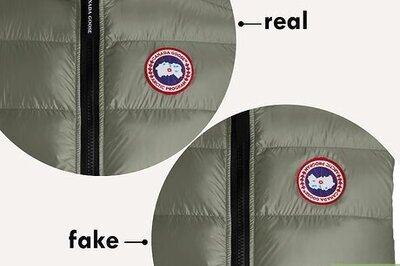
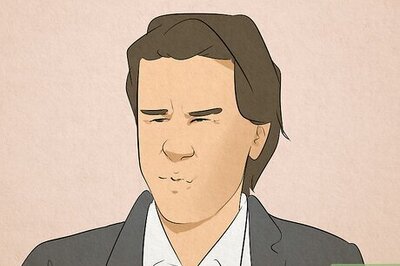

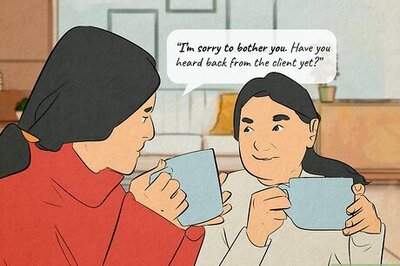
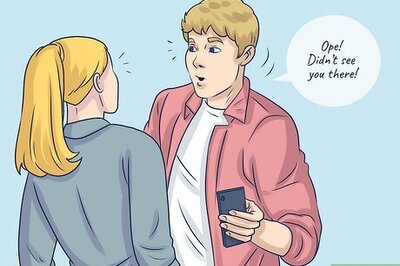
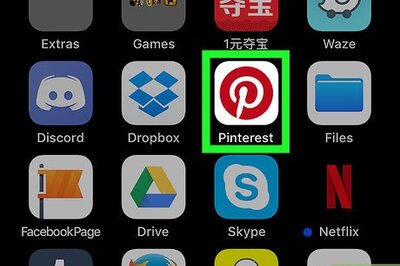

Comments
0 comment